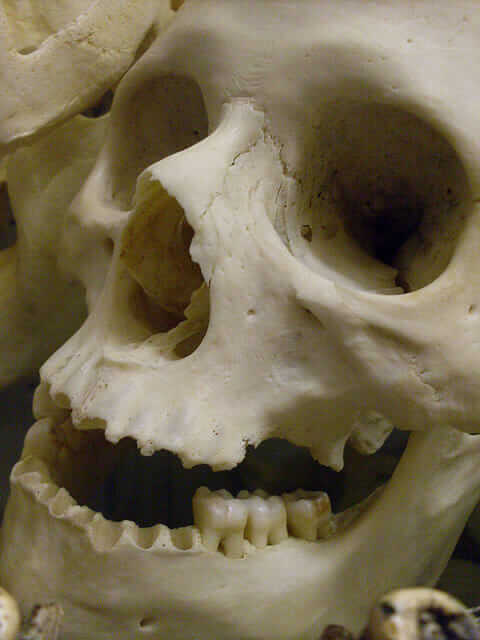The word ‘osteoporosis’ means ‘porous bone’, and refers to the gradual dissolution of the bone tissue leading to weak bones that can fracture easily. Although most people think of bones as being solid, the skeletal system is actually made up of living bone tissue that looks somewhat like a honeycomb.
Osteopaths are the cells responsible for producing new bone tissue, and these cells continue to provide new bone tissue throughout the life of an individual. The problem of osteoporosis arises when more bone tissue is lost than is replaced.
All bone tissue has somewhat open appearance, but bones that are suffering from osteoporosis have large openings in them, making them very brittle and weak. Severe cases of osteoporosis result in almost no bone tissue being present and a fracture can occur simply when stepping down or getting out of the bathtub.
Who Can Get Osteoporosis?
Actually, literally anyone can suffer from osteoporosis, but the majority of those who do so are women over the age of 50. Menopause causes the ovaries to stop producing estrogen, and this will result in bone thinning over time. There are some other factors that can also contribute to the development of this condition:
- Being either very thin or obese.
- Using anti-inflammatory drugs, such as prednisone, to treat auto-immune diseases.
- Smoking and excessive drinking.
- A genetic predisposition.
- Sedentary lifestyle.
Older men are also at a greater risk of osteoporosis as their testosterone levels fall. A new, rather startling finding is that teenage boys who spend considerable time at their computers also have a much higher chance of developing osteoporosis later in life than do their more active friends.
Pain from Osteoporosis
There are a number of ways that osteoporosis causes discomfort and pain to those who develop it. The spine is one of the major problem areas, and as bone loss occurs in the vertebrae, they will collapse upon themselves to some extent. Nerves and discs can easily be pinched from this and cause serious discomfort. A collapsing spinal column can also cause the pelvic and rib bones to come into contact and rub painfully against one another.
Sometimes, as the muscles attempt to compensate for pressure on the joints, painful muscle spasms can occur – nerves are pinched as the muscles overexert themselves.
And, of course, a major source of osteoporotic pain comes from bone fractures. These can be unmistakable, such as a broken arm or wrist bone, or microscopic fractures that cause pain without obvious signs. Fractured bones will often continue to cause pain even after the break has healed, leading to chronic pain. Chronic pain, even at a relatively low level, can cause depression, anxiety, and irritability.
Massage Can Help
Although over-the-counter pain relievers can provide temporary relief, they will do nothing to actually treat the problem area as massage will. Massage can assist with relieving all levels of osteoporosis pain, making this one of the best and least intrusive of treatments for this condition.
Before beginning massage therapy always get the go-ahead from your doctor. Also, make sure that the massage therapist is thoroughly knowledgeable in treating osteoporotic clients. Special massage training is required if those with osteoporosis will be safely and effectively helped.
- Massage therapy stimulates the nerves and tissues and more blood is delivered to the problem areas, especially muscles that have experienced painful spasms.
- Tension caused by the chronic pain of osteoporosis can be relieved by massage, which has been shown to lower blood pressure and promote the release of endorphins.
- Bones that have already suffered fractures will heal more quickly when massage helps to increase circulation. In addition to bringing more blood to the affected area, the lymph system is also stimulated to help carry away toxins produced by the fracture.
- Massage can also help to make the joints more flexible and more likely to stand the increased strain put upon them by osteoporosis.
Massage therapy is not able to actually cure osteoporosis, but it can help with providing relief from pain, stress, and tension. Muscles and joints that have been strengthened will also help contribute to a better sense of balance, making falls less likely.
